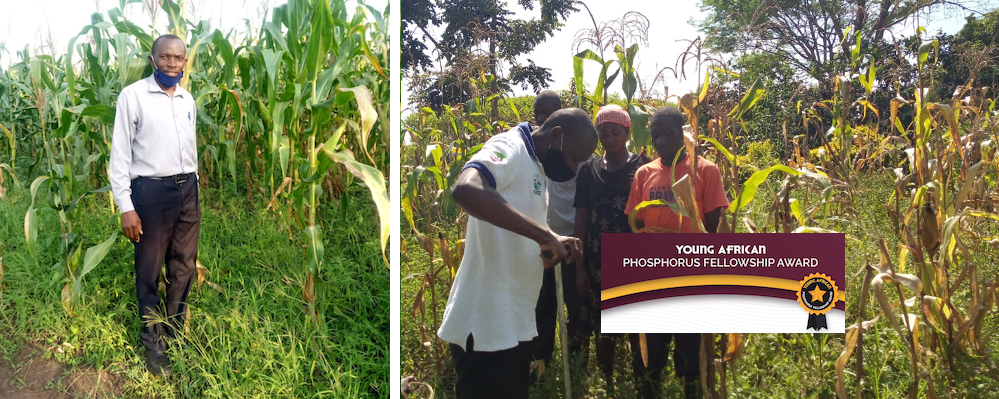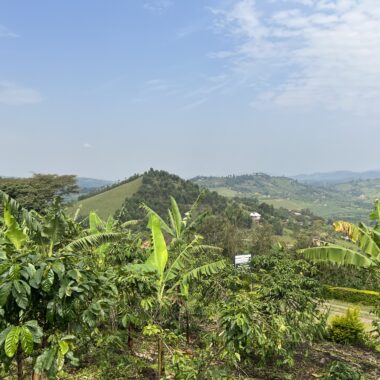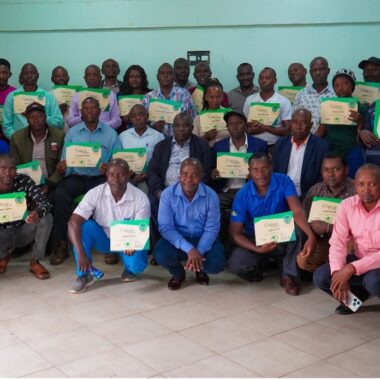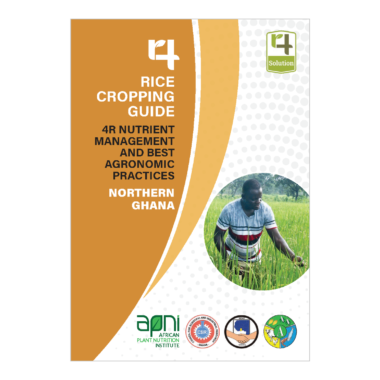‘Legacy Phosphorus’ Study is Building Awareness on Improved Phosphorus Management Strategies for Maize Cropping Systems in Uganda
Most maize farmers in Uganda recognize the importance of applying phosphorus (P)-based fertilizers to their crops on regular basis. Phosphorus remains one of the most limiting nutrients to sustainable maize production. Most tropical soils tend to quickly immobilize or “fix” P that is not immediately taken up by the plant and as a result they cannot provide the enough P to sustain adequate and profitable maize crop production.
Despite the awareness of the importance of applying P, farmers often lack the knowledge or insight on the impact of their P fertilization rates. Often P rates are inadequate and negative P balances persist. However, in more intensively farmed fields that are supporting higher yields, farmers may be building their P fertility to the point where their crops have access to more P supply than they require. Farmers need to know when, and to what extent, they can rely on residual or “legacy” soil P since this information can pay-off both in terms of reducing fertilizer costs and protecting the surrounding environment.
Dr. Patrick Musinguzi, Lecturer, Department of Agricultural Production, School of Agricultural Sciences at Makerere University in Uganda is seeking to better understand the local factors involved in utilizing legacy P in two distinct maize production systems. Dr. Musinguzi’s proposal for this work was awarded the Young African Phosphorus Fellowship Award, an initiative of APNI, OCP and UM6P, which encourages scientific programs relevant to understanding and improving P management in African agro-ecosystems through its financial support.
“The objective of the project was to establish the contribution of continuously applied P based fertilizer on net residual P increase in both irrigated and non-irrigated maize cropping systems in Uganda – Dr. Patrick Musingusi
The study selected two distinct maize systems; (1) a furrow-irrigated district of Kasese, a region that has been producing maize, rice and other crops with intensive use of fertilizer for more than 50 years; and (2) a rainfed region in Masindi district.
Farm surveys conducted during the study in both districts identified tracts with varying P fertilization histories and created groups of fields with less than 1 year, 2 to 5 years, and over 5 years of continuous P fertilizer use to attempt to identify relationships between P fertilization history and legacy P.
“Interviews with farmers in Kasese revealed a long-standing history prior to 2018 that is characterized by applications of 17-17-17 (NPK),” explains Dr. Musunguzi. “Farmers generally practiced a split of 250 kg NPK/ha, which supplies 43 kg P2O5/ha (i.e., 19 kg P/ha) both at planting and flowering stages.”
Recent trends show a change in fertilizer source preference with farmers switching to: (1) applying 250 kg/ha of a complete 13-24-12 (NPK)+S+Mg+Zn source that supplies 60 kg P2O5/ha (26 kg P/ha) at planting; and (2) a top dressing of 250 kg/ha of 23-10-5 (NPK)+S+Mg+Zn that supplies 25 kg P2O5/ha (i.e., 11 kg P/ha).
In the less productive rainfed region in Masindi district, farmers apply urea (46-0-0) and DAP (18-46-0). Commonly, an application of 125 kg DAP/ha supplies 57 kg P2O5/ha (25 kg P/ha) at planting, and 100 kg/ha of Urea (46 kg N/ha) is top dressed.

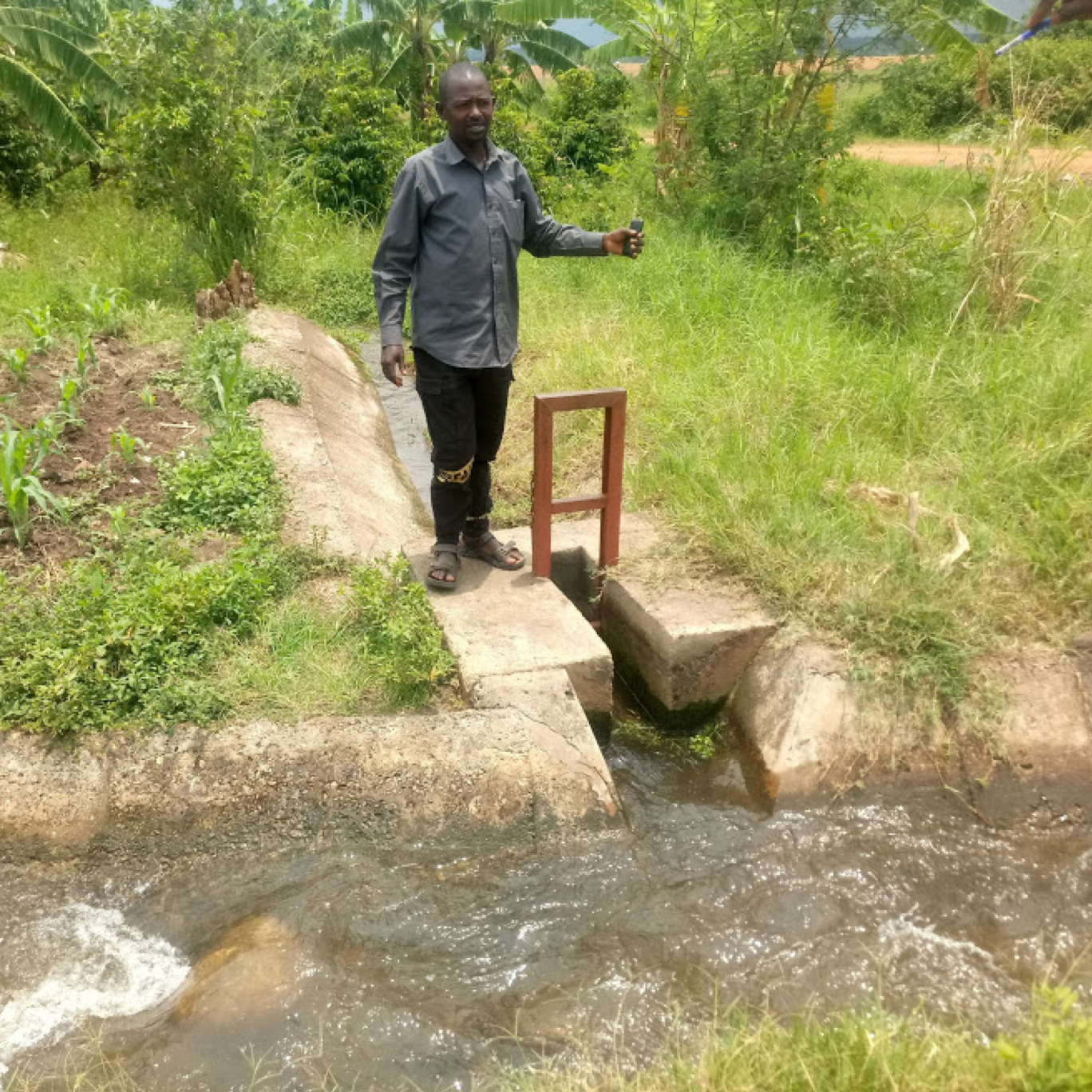
Furrow-irrigated maize (top) in Kasaesa is supported by the Mubuku irrigation channels (bottom).
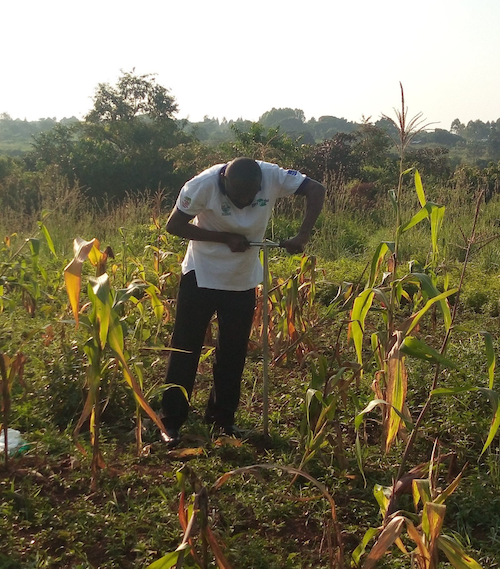
Soil sampling a rainfed maize field in Masindi (western Uganda).
Initial Findings to Build Upon
The study found high P accumulation (legacy P) in the intensively irrigated system at Kasese; and conversely, the lower P input rainfed system had little P accumulation with the majority of fields having soil test P values below the critical concentration of 15 ppm.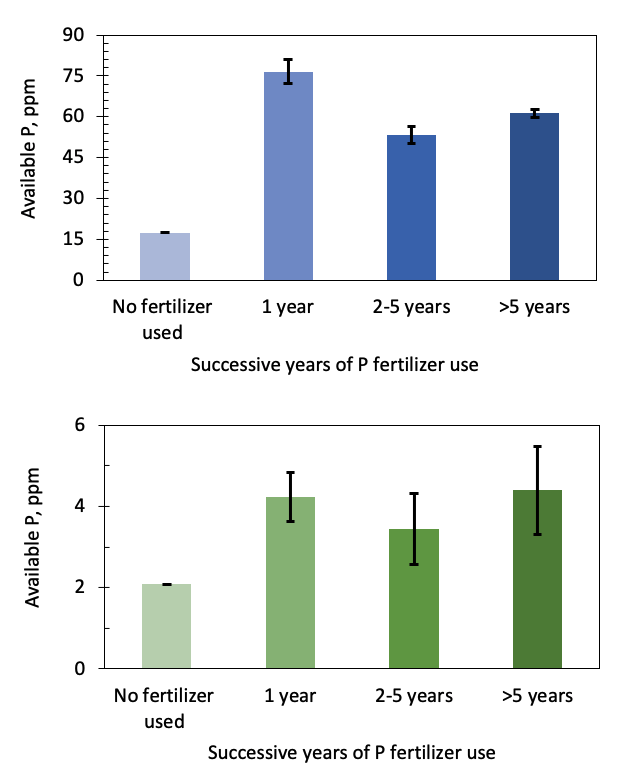
Extractable P (Bray-1; 0 to 20 cm depth) in maize fields under a high input system in Kasese District (top); and a rainfed, low input system in Masindi District (bottom), Uganda.
Sufficiency rates for P application in rainfed maize (i.e., amounts needed to achieve critical soil P concentrations) ranged from 14 to 35 kg P/ha. Past practices have created negative P balances in these low input systems, and highlight the need to increase P rates to improve maize productivity and sustainability.
The irrigated fields in Kasese showed a large P surplus (as high as 214 kg P/ha) due to highly positive P balances. Legacy P in this system suggests an ability to reduce or even halt the use of P for a period of time.
“Overall, there is (strong) evidence that P-based fertilizers have the potential for building legacy P,” said Dr. Musinguzi.
Monitoring of soil P drawdown and application of maintenance rates of P would optimize farm resources and minimize risks of environmental harm such as groundwater pollution.
As a preliminary study, Dr. Musinguzi still has many questions to address to improve upon this initial assessment of legacy P. He notes the need to expand the research over a larger area, and dig deeper into the historical use patterns of fertilizer use in these vastly different maize production systems.
“There is massive need for education about P management under both low input and high input systems since knowledge in P management seems lacking,” explains Dr. Musinguzi.
The acknowledgment and correction of scenarios of both over and under application of P will be vital for to achieve sustainable production of maize.
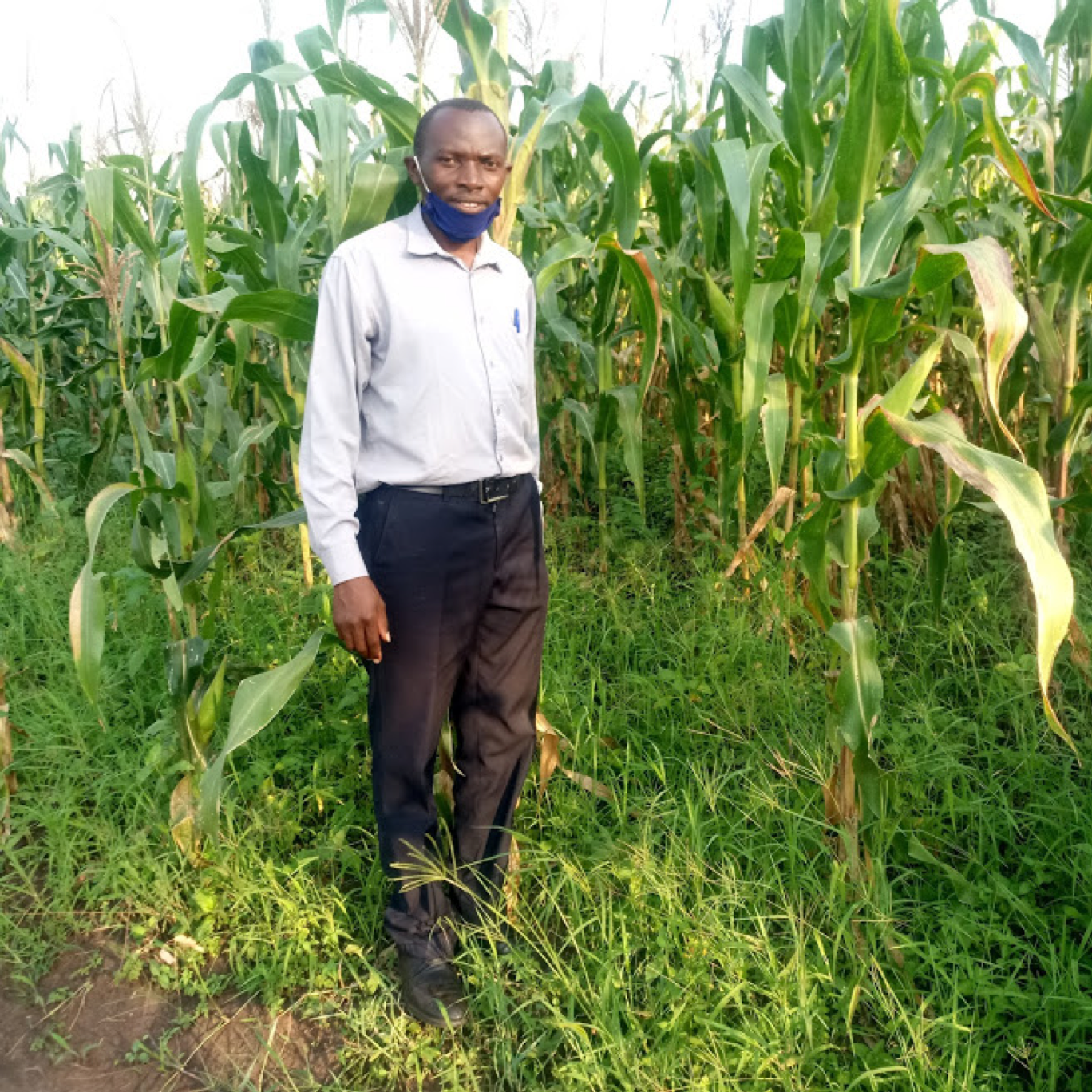
Dr. Patrick Musinguzi, 2020 Young African Phosphorus Fellowship Award recipient, inspecting on-farm rainfed maize study site in Masindi (western Uganda).
Acknowledgement
Dr. Musinguzi extends thanks to the farmers who allowed us access the fields, and Ddembe Joseph Lukyamuzi who assisted with field works. Special thanks to APNI/OCP/UM6P for the financial support under the Young African Phosphorus Fellowship Program https://www.apni.net/p-fellowship-apply
Contributors: Gavin Sulewski, APNI Editor; Dr. Patrick Musinguzi, Lecturer, Department of Agricultural Production, School of Agricultural Sciences at Makerere University, Uganda.

